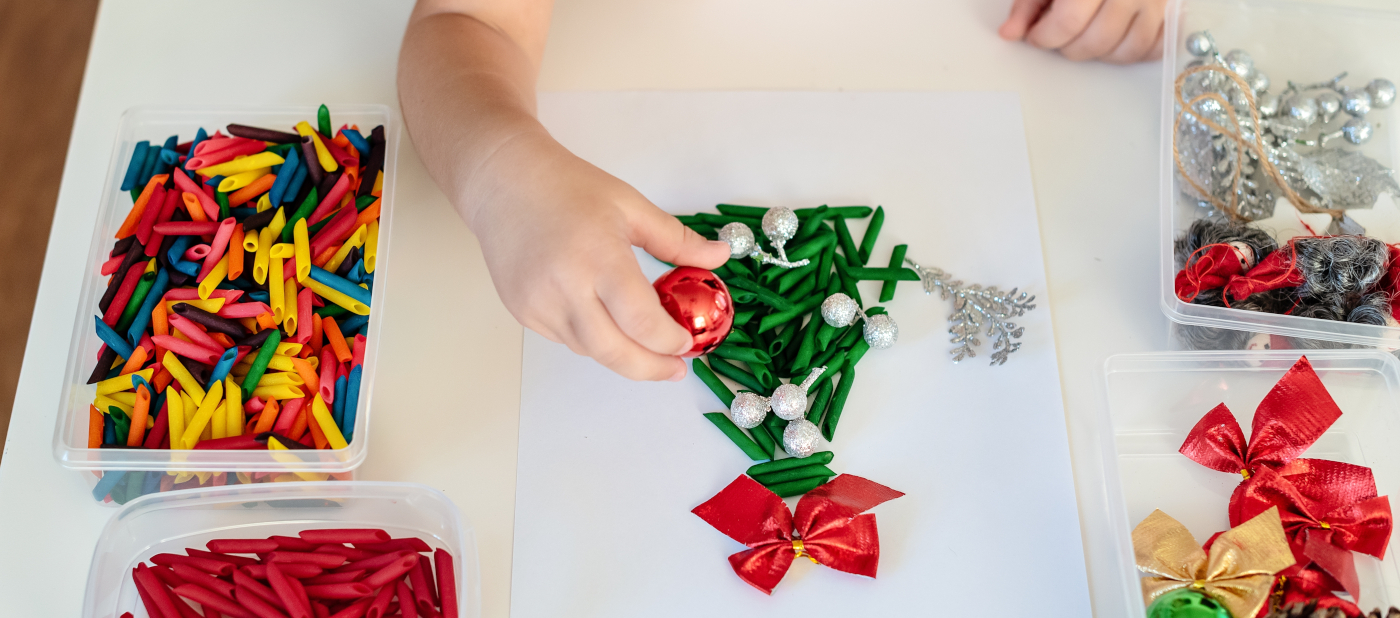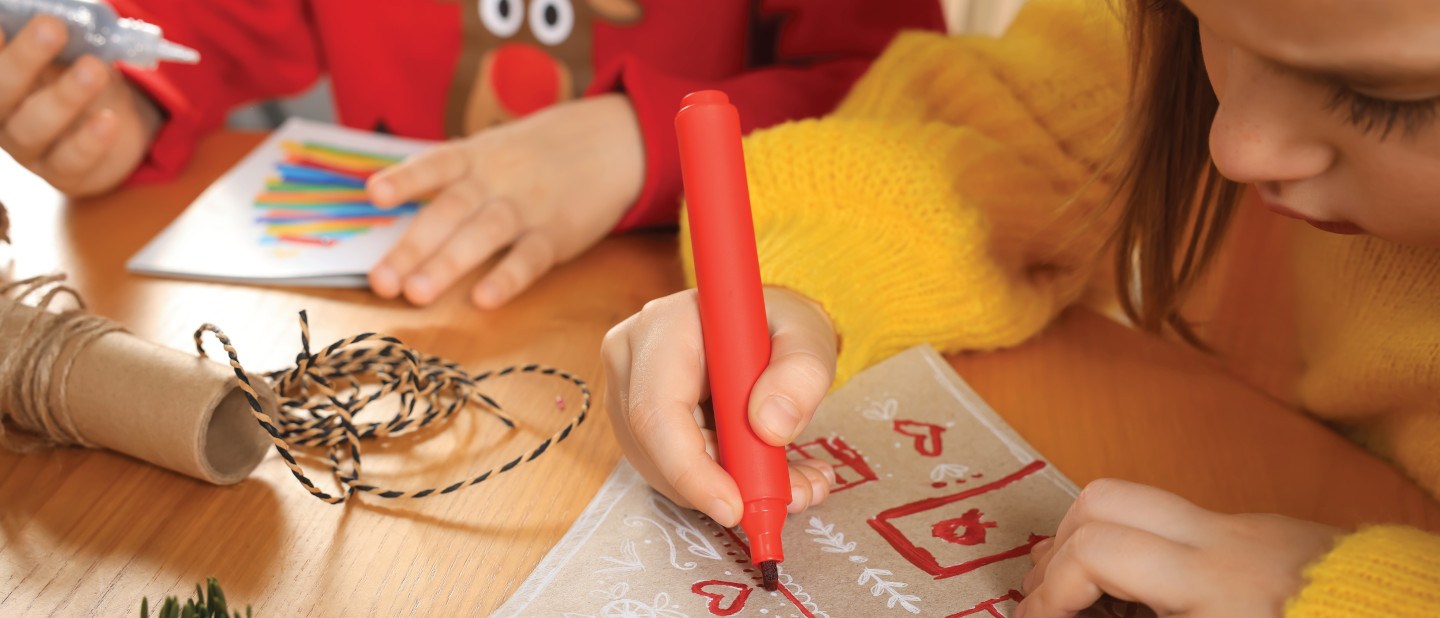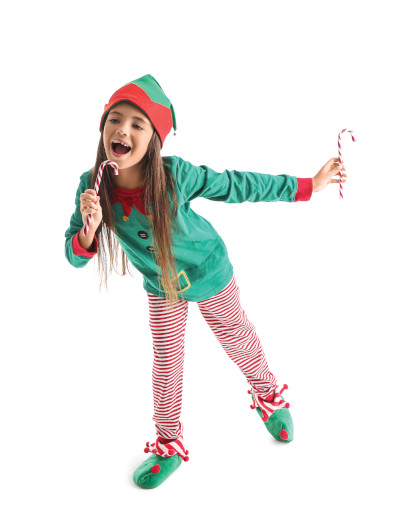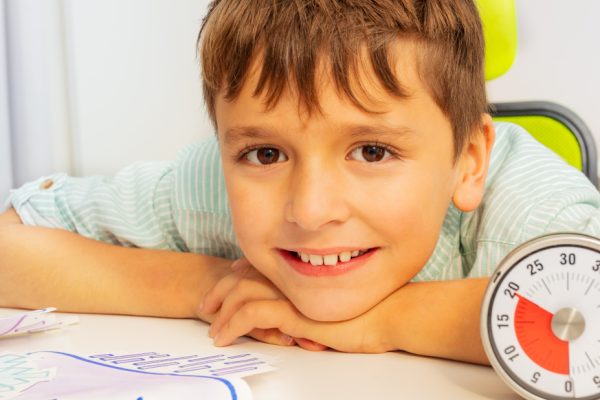
Sleigh the season: festive development activities
Beat the boredom and get festive with this bumper selection of activity ideas that target different needs and development areas.
SENSORY FUN
Sensory-rich ideas to soothe or stimulate. Take your pick!
Christmas sensory bins
Create a sensory bin with themed items like fake snow (you can use shaving cream or ice cubes for a cool effect), Christmas tree decorations, pine-cones, and tinsel. Include different textures and colours to stimulate the senses. Encourage children to explore the materials to help them develop tactile discrimination and fine motor skills. This can be done outside in a shaded area to keep cool.
Frozen water bead play
Water beads are a great sensory tool. Freeze them beforehand for an exciting activity in the summer heat. Fill a bin with the cold beads, add some Christmas- themed objects like red and green beads or small toy reindeers etc. Children can scoop, squeeze, and feel the beads as they enjoy their cooling effect. Make sure you monitor any play with small objects that can be put in mouths!
Christmas scent exploration
Create small scent jars using familiar Christmas scents like cinnamon sticks, pine needles, orange slices, or peppermint essential oil. Let children smell the jars and match the scents to pictures of festive items (e.g. a pine tree for pine needles). This is a great sensory activity engaging the sense of smell.
Tinsel sensory curtain
Hang long strands of tinsel from a doorway or outdoor frame at a child’s wheelchair or walker height. Encourage them to move through or under the curtain, feeling the texture of the tinsel. It’s a great way to promote tactile stimulation, movement, and engagement with shiny, reflective materials.
FINE MOTOR SKILL IDEAS
Fine motor skills activities help children develop hand strength and coordination, which are essential for everyday tasks. Here are some holiday-themed ideas that are both fun and skill-building.
Christmas ornament decorating
Provide children with plain Christmas ornaments and a variety of decorating materials such as stickers, small gems, ribbons, and non-toxic paint. Encourage them to use their hands to stick, paint, and tie, which helps improve finger dexterity and precision. For children with physical disabilities, adapt tools or provide larger objects that are easier to grip.
Making Christmas cards

Using coloured paper, glue, and Christmas stickers, get stuck into the fun task of creating your own Christmas cards. Holding pencils, cutting paper (using adapted scissors for those with physical disabilities), and gluing items onto the card helps refine motor skills. This can also be a nice way to practice handwriting or drawing for children working on those skills.
Festive bead stringing
Give children red, green, and gold beads along with a piece of string. Encourage them to string the beads to make festive necklaces or garlands. Bead threading is excellent for hand-eye coordination and fine motor control. For children with limited hand mobility, use larger beads or thicker string.
Frozen Christmas treasure hunt
Freeze small, Christmas-themed objects (like plastic snowflakes, tiny presents, or mini baubles) inside ice blocks. Children can use their hands to explore the cold ice or use warm water to melt it (or the sun in the backyard!) and retrieve the treasures inside. This activity not only provides a cool sensory experience in the summer heat but also helps build fine motor strength.
Christmas sticker storybook
Provide children with a blank Christmas- themed scrapbook and a variety of Christmas stickers (reindeer, Santa, presents, etc.). They can create their own festive story by placing the stickers on the pages and drawing around them. Peeling and placing the stickers helps develop fine motor control, while creating the story stimulates imagination.
Pinecone tree decorating
If you can get your hands on some pinecones, have children decorate them to look like mini Christmas trees. Use small beads, pom-poms, or glitter glue, encouraging children to use their fingers to place the decorations. When you’re done, you’ll be left with some lovely natural Christmas ornaments.
Mini gift-wrapping station

Set up a station where children can wrap small items like toy blocks or boxes. Provide festive wrapping paper, ribbon, and tape. Tearing the tape, cutting paper, and tying ribbons help refine fine motor skills. This can be done at a table with the appropriate height for children in wheelchairs or standers.
GROSS MOTOR SKILL ACTIVITIES
Gross motor skill activities support overall body coordination, balance, and strength, crucial for movement and mobility. Try these festive, playful exercises.
Festive obstacle course
Set up an outdoor Christmas-themed obstacle course in the backyard. Use items like large inflatable Christmas decorations, cones, or pool noodles in festive red and green. Children can weave through, climb over, or crawl under obstacles. Adapt it for children with physical disabilities by ensuring some activities focus on upper body movements or using a wheelchair- friendly course.
Snowball toss
Make “snowballs” out of lightweight white fabric or foam balls. Set up targets like buckets or boxes decorated with Christmas wrapping paper at different distances. Encourage children to toss or throw the snowballs into the targets, which can be done sitting or standing, promoting arm strength and coordination.
Christmas tree bowling
Create a Christmas-themed bowling game using large soda bottles wrapped in Christmas paper or decorated to look like Christmas trees. Roll a ball toward the “trees” to knock them down. Children can bowl from their wheelchair or walker, and the game can be played indoors or outdoors.
Reindeer relay race
Set up a fun relay race where children pretend to be reindeer delivering gifts. Children can wear reindeer antlers, and depending on their mobility, either walk, roll in their wheelchair, or use a walker to move “presents” (light gift boxes or bags) from one spot to another. Adapt the course so it’s suitable for all mobility levels.
SPEECH & LANGUAGE ACTIVITY IDEAS
For children working on speech and language development, Christmas presents many opportunities for playful language building.


Christmas Guess Who?
Create a Christmas version of “Guess Who?” using Christmas characters (Santa, reindeer, elves, etc.) or objects (candy canes, ornaments, presents). One player describes the character or object without saying its name, and the other players must guess what it is. This helps with describing skills, vocabulary expansion, and auditory processing.
Christmas shopping role-play
Set up a pretend Christmas “store” with various items like wrapping paper, toys, or ornaments. Have children “shop” and “pay” for items using play money. Encourage them to ask questions like, “How much is this?” and make small talk with the cashier. This fun role- playing game can help improve social communication and language skills.
Christmas sound hunt
Play different Christmas sounds ( jingle bells, Santa’s “Ho Ho Ho,” reindeer hoof sounds, sleigh bells, etc.) and encourage children to match the sound with pictures or objects. You can use a smartphone or tablet to play the sounds, and this activity helps with sound identification and auditory discrimination while incorporating holiday themes.
Christmas charades
Adapt the classic game of charades with Christmas-themed actions or words. You can use visual supports for children who need them. This encourages expressive language, as children must communicate through actions or words. It can also help children with autism or intellectual disabilities work on understanding non- verbal communication and language.
Singing christmas songs
Singing is an excellent way to encourage speech development, as it helps with rhythm, intonation, and word formation. Choose easy, repetitive Christmas songs such as “Jingle Bells” or “Rudolph the Red-Nosed Reindeer.” You can incorporate gestures or sign language for children who are non-verbal.
Christmas story-time
Read a simple Christmas-themed story, such as “The Night Before Christmas.” Engage children by asking questions about the story and encouraging them to describe pictures or make predictions about what happens next. You can also adapt the book to a sensory-friendly version by adding textures (e.g. cotton wool for snow) to the pages to engage multiple senses while supporting language comprehension.







